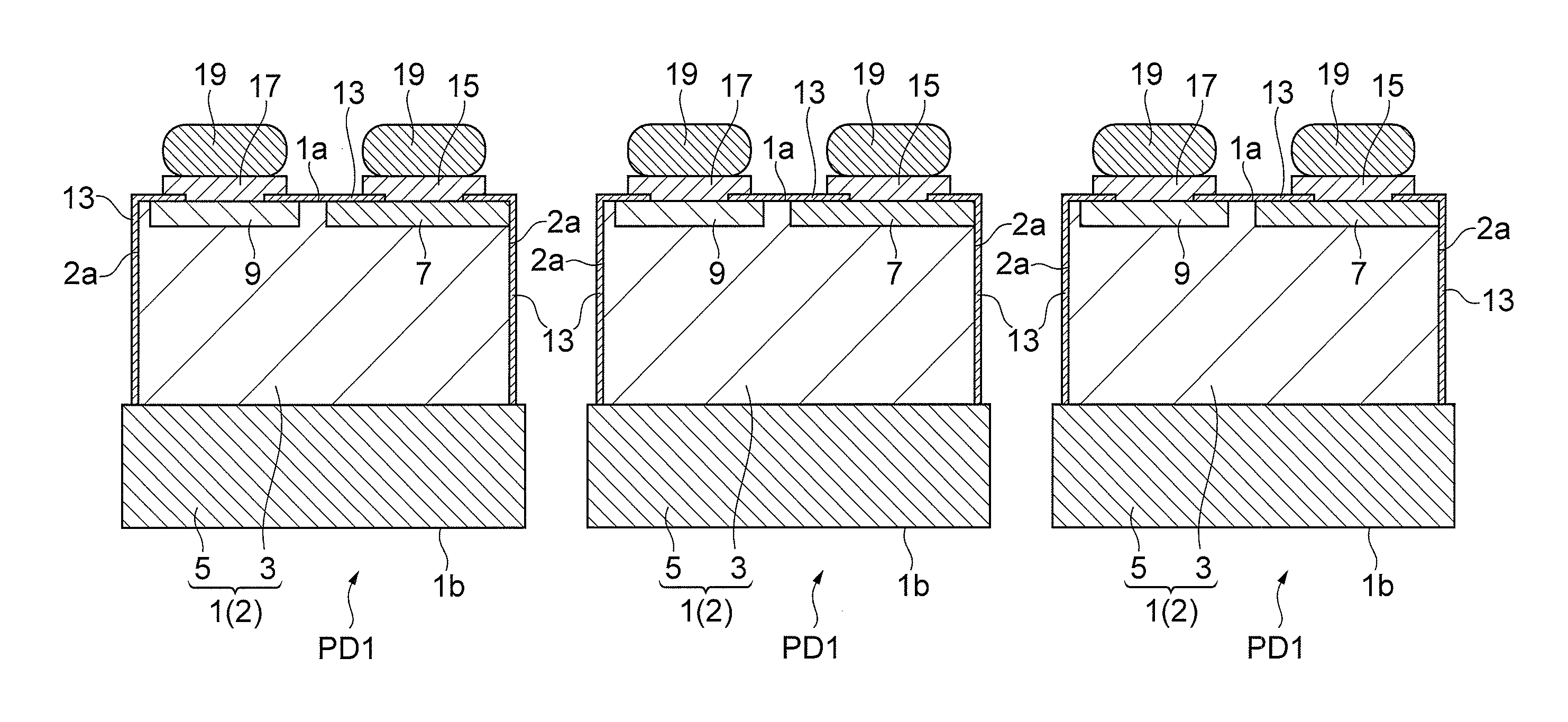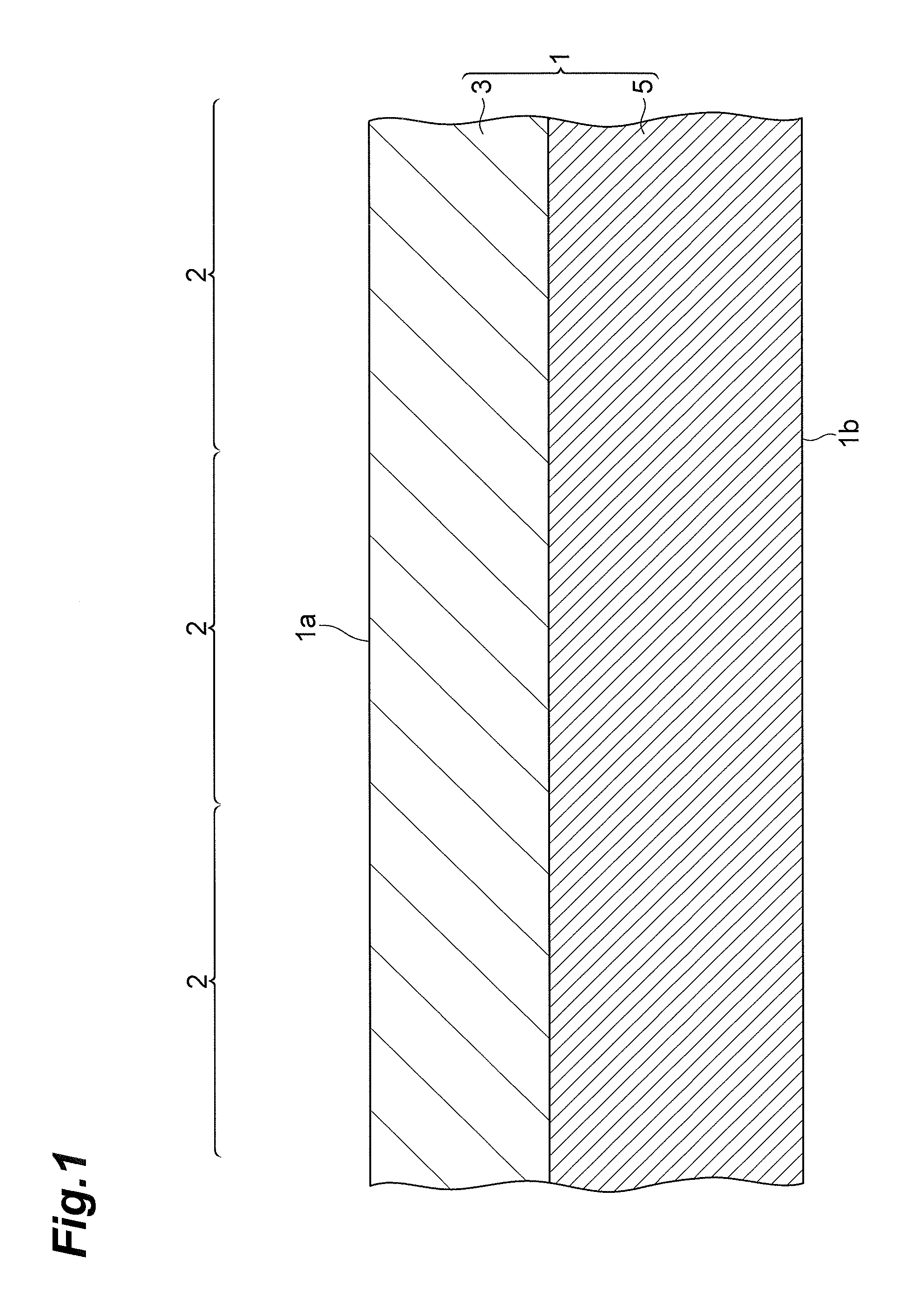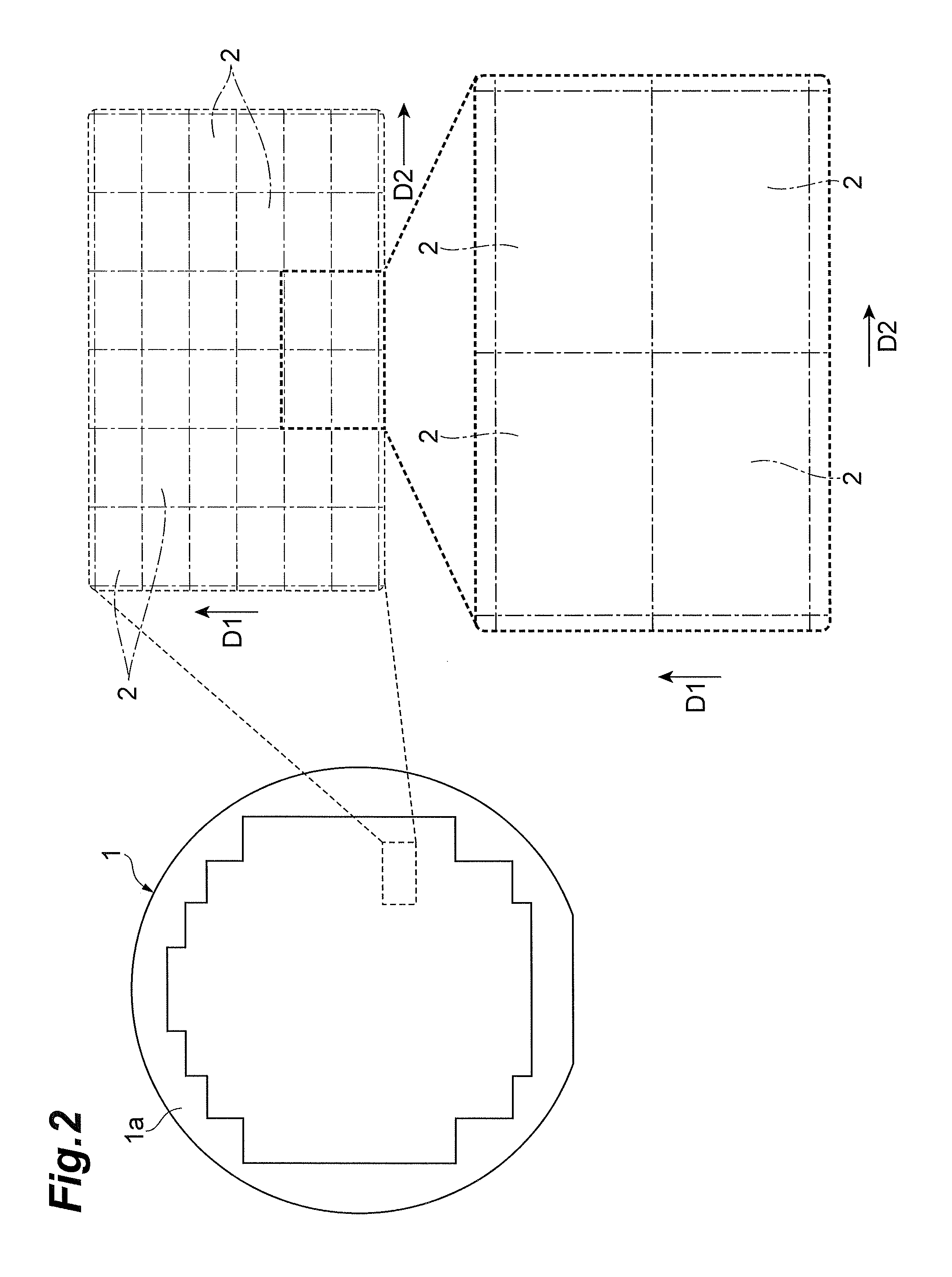Manufacturing method for edge illuminated type photodiode and semiconductor wafer
a manufacturing method and semiconductor technology, applied in the direction of photovoltaic energy generation, electrical apparatus, semiconductor devices, etc., can solve the problems of difficult to detect light in a relatively short wavelength region, contribution to output, and difficult to manufacture photodiodes described in the above applications, so as to prevent deformation and damage ensure the mechanical strength and facilitate the handling of the semiconductor wafer
- Summary
- Abstract
- Description
- Claims
- Application Information
AI Technical Summary
Benefits of technology
Problems solved by technology
Method used
Image
Examples
first embodiment
[0059]A manufacturing process for edge illuminated type photodiodes according to the first embodiment will be described with reference to FIGS. 1 to 13. FIGS. 1 to 13 are drawings for explaining the manufacturing process for edge illuminated type photodiodes according to the first embodiment.
[0060]First, a semiconductor substrate 1 is prepared (cf. FIGS. 1 and 2). The semiconductor substrate 1 is a silicon substrate having a principal surface 1a and a principal surface 1b opposed to each other. The semiconductor substrate 1 includes a first substrate region 3 of the first conductivity type (e.g., n-type) located on the principal surface 1a side and a second substrate region 5 of the first conductivity type (e.g., n-type) located on the principal surface 1b side. The second substrate region 5 has a higher impurity concentration than the first substrate region 3.
[0061]The semiconductor substrate 1 can be obtained, for example, by growing on an n+-type semiconductor substrate with a hi...
second embodiment
[0100]A manufacturing process for edge illuminated type photodiodes according to the second embodiment will be described with reference to FIGS. 19 to 29. FIGS. 19 to 29 are drawings for explaining the manufacturing process for edge illuminated type photodiodes according to the second embodiment.
[0101]First, a semiconductor substrate 31 is prepared (cf. FIGS. 19 and 20). The semiconductor substrate 31 is a silicon substrate having a principal surface 31a and a principal surface 31b opposed to each other. The semiconductor substrate 31 includes a first substrate region 33 of the second conductivity type (e.g., p-type) located on the principal surface 31a side and a second substrate region 35 of the first conductivity type (e.g., n-type) located on the principal surface 31b side. The second substrate region 35 has a higher impurity concentration than the first substrate region 33.
[0102]The semiconductor substrate 31 can be obtained, for example, by growing on an n+-type semiconductor ...
PUM
 Login to View More
Login to View More Abstract
Description
Claims
Application Information
 Login to View More
Login to View More - R&D
- Intellectual Property
- Life Sciences
- Materials
- Tech Scout
- Unparalleled Data Quality
- Higher Quality Content
- 60% Fewer Hallucinations
Browse by: Latest US Patents, China's latest patents, Technical Efficacy Thesaurus, Application Domain, Technology Topic, Popular Technical Reports.
© 2025 PatSnap. All rights reserved.Legal|Privacy policy|Modern Slavery Act Transparency Statement|Sitemap|About US| Contact US: help@patsnap.com



